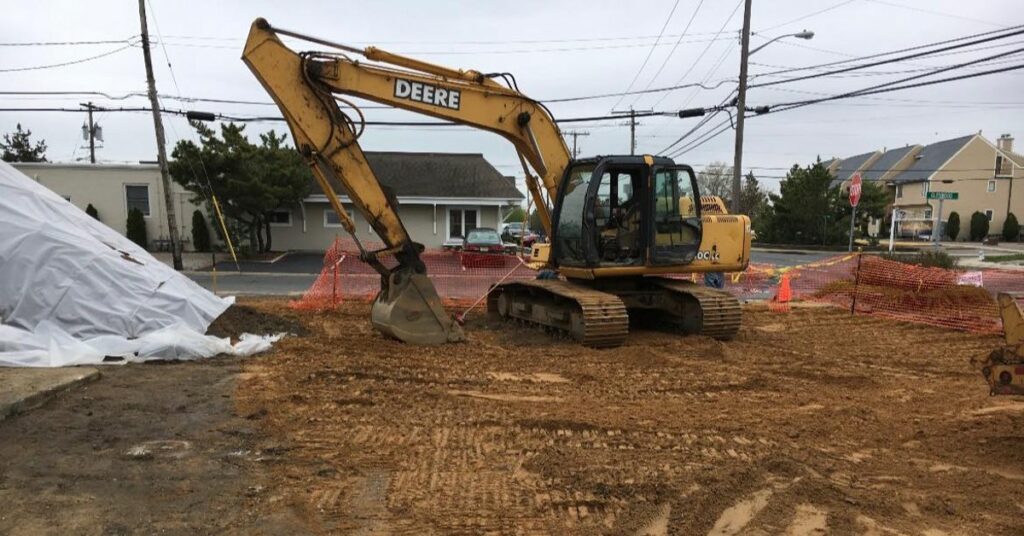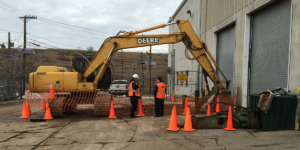Fuel Storage Tank Requirements for Temporary Construction Sites
Construction fleets could go through hundreds of gallons of fuel in a day. However, this leaves multiple site managers wanting to know the ins and outs of fuel storage on an actual worksite and not just fuel in movement. Not all sites need permanent reservoirs for fuel. Some sites are temporary structures for operations that may only last the lifecycle of a project.
This is when site managers need to be aware of temporary construction site fuel storage tank requirements. To oversee a construction site, you must know the minimum requirements for temporary fuel tanks.
Keep reading as we discuss what you need to know about fuel storage on your job site, including the capacity and size requirements for temporary storage tanks and maintenance regulations.
How Do You Store Fuel on a Construction Site?
Operations teams often ask, how do you store fuel on a construction site? Storing fuel on a construction site has to be done in a specific way to avoid adverse events. A few things to keep in mind are;
- Ensuring the fuel storage tank is clean and clear of water
- Provide consistent monitoring to assess any wear over time of the project
- Ensuring your site is enhancing fuel performance with the right fuel types
- All tanks must be DOT approved
- Do not allow fuel storage to exceed five gallons
- Place all fuel storage where fuel will have minimal heat exposure
Following these simple safety regulations will keep your construction site in compliance with OSHA safety regulations. There are also a few additional maintenance tactics that you want to be aware of as well;
- Ensuring the tank is secure at all times
- Using a secondary form of containment
- Reducing transfer needs
- Monitoring temperature regulations not to exceed room temperature
How Much Fuel Can Be Stored on a Construction Site, and What Are the OSHA Requirements?
What are the OSHA requirements for fuel storage tanks? The maximum capacity guidelines for your site, environment, and operations are the most important to consider. The general rule for storage and handling is that no more than 120 gallons of any flammable liquid should be in one area for storage.
This applies to liquid categories one through three, and fuel is a category one liquid with more to do with permanent storage options. However, depending on the liquid category, this will depend on a few different factors for portable options and temporary sites.
So, how much fuel can be stored on a construction site? For temporary fuel tanks, the maximum capacity is five gallons of fuel. The containers used for storage also have to feature a specific design for this capacity as well.
For oil storage compliance and safety reasons, for example, fuel tanks have to have the capability of relieving internal pressure. With that, OSHA fuel storage requirements that for portable fuel tanks, no more than 25 gallons of fuel be kept on one site outside of approved areas. This would apply to an area with storage cabinets and storage sections for fuel.
Whereas a construction site, fuel storage must be in smaller amounts. It will also be strategically placed and steadily monitored due to the work that occurs in a construction zone. What operations teams have to realize is that for anything larger, the application would need to be more permanent.
Location for Temporary Construction Site Fuel Storage Tank Requirements
There are a few rules to keep in mind for the location of your oil and gas tanks. Temporary oil and gas tanks should be at least 50 feet away from any structure; this is an important requirement to keep track of for safety reasons.
This distance requirement also applies to anything being directly filled from the tank. Also, temporary construction site fuel storage tanks must have a secondary containment system for certain fuels. You also have to consider external factors.
For example, fuel tank compliance requires fuel to be at a specific temperature. This means that operations managers would need fuel tanks to comply with a particular orientation. The tanks will often be located outdoors and above ground for construction sites.
This would require an east-to-west installation. The point is to avoid direct sunlight and overexposure to heat from the sun’s rays.
What to Know About Fuel Transfers
Tanks used for transfer will usually share a conduit. When transferring fuel on a construction site, all fuel must be transferred using a container designed for holding flammable liquids. The container also has to be labeled as such.
The fuel container must also be placed in an area away from any ignition source or areas exposed to sunlight. To combat this, fuel should be transferable at its’ internally regulated temperature. The tank itself should also be vented to prevent a buildup of pressure inside the container.
Usually, a transfer pump will is used during a fuel transfer. There are also hoses that site operators can use with approval.
To reduce the chance of leaks or spills, construction sites should keep their fuel transfers to a minimum. Doing this will also reduce fire risks.
Another thing to remember with temporary construction site fuel storage tank requirements is not to refill fuel tanks to capacity. The reason for this is to prevent fuel overflow and to provide the room needed for expansion.
Professional Environmental Remediation When Your Site Needs It
While multiple construction sites will be temporary, there will continue to be a need for compliance with temporary construction site fuel storage tank requirements. These regulations help keep your site and workers safe and are necessary for optimizing the fuel storage equipment you use.
Stewart Environmental Remediation specializes in various services tailored to ensure safety compliance and streamlined solutions for projects that fall within the residential, commercial, and industrial sectors.
With a team of experts, state-of-the-art machinery, and robust strategies backed by experience, reach out to the Stewart Environmental Remediation team to learn more about the services we provide to New Jersey, Connecticut and Pennsylvania..




